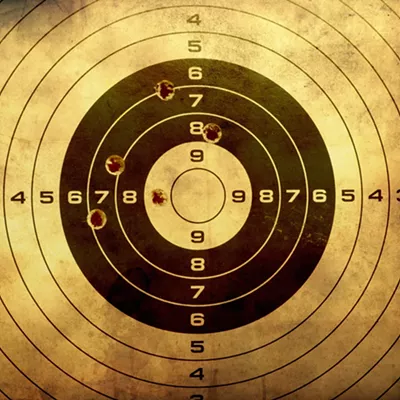"Being now determined to go into Winter quarters as Soon as possible," Clark writes, the captains quickly focused on their new task. In June of 1805, when at the confluence of the Missouri and Marias rivers, Lewis and Clark had evaluated two possible routes by asking the men for their opinion. On Nov. 24, 1805, the captains once again convened a meeting of expedition members to seek advice. "At night," recounts Sergeant Patrick Gass, "the party were consulted by the Commanding Officers as to the place most proper for winter quarters." Private Joseph Whitehouse similarly used the word "consult" in his journal entry. Sergeant John Ordway characterized the event only slightly different, writing that the officers drew conclusions from "the oppinion of the party." Currently it is fashionable to use the word "vote" for what took place that evening, but casting votes, as we understand it today, is not supported by any journal entry.
Three sergeants were the first to answer the captains. Privates, interpreters and York, Clark's manservant, followed. Toussaint Charbonneau declined to offer an opinion. Sacagawea, however, made known her preference for "a place where there is plenty of Potas." It is not clear from Clark's tally if Sacagawea -- on this occasion referred to as "Janey" -- was asked her opinion or if she just spoke up spontaneously.
The sergeants all held the same view: cross the Columbia to the south bank and seek a place to build a fort, all the while monitoring the disposition of the Indians and the likelihood of finding herds of elk, a necessity for both food and clothing. Only one man disagreed with the sergeants. Clark added more good reasons to stay near the coast. First, a Euro-American trading vessel just might arrive at the mouth of the Columbia River. Second, salt, an essential item for preserving meat, can be boiled from ocean water. And lastly, the coast range of mountains on the southern shore would provide protection from the constantly blowing wind.
It having been agreed that the southern (Oregon) shore should be explored, the captain's follow-up question asked the men to indicate their secondary preference should the first choice prove to be undesirable. This time three possibilities emerged from the meeting. Six men urged the captains to immediately begin the journey east, but stop and spend the winter near Celilo Falls. Nine men also wished to paddle up river right away, but they thought the Sandy River -- opposite where Camas, Wash., is today -- might be the most hospitable spot. Thirteen men suggested what Clark recorded as "lookout" or "up," shorthand terms that remain undeciphered today. (If a person wishes to check the opinion of individual explorers, the tally is in Clark's journal entry. Note that Clark made a mathematical miscalculation in his summary statement, one that has been adjusted for this telling.)
Fortified by their evening discussion, the Lewis and Clark Expedition broke camp on Nov. 25 and returned to their canoes. Unfortunately, the "Wind being high rendered it impossible for us to Cross the river from our Camp, [so] we deturmind to proceed on up where it was narrow." In the vicinity of Pillar Rock -- roughly 28 miles from the Pacific Ocean -- numerous islands clog the Columbia, thus making passage across the river a series of easy hops. The Corps of Discovery spent their final night on the northern shore of the Columbia under cloudy skies, although there was enough visibility to see Mt. St. Helens in the distance. On the morning of Nov. 26, the expedition canoes passed lazily among Columbia River islands and inlets until they reached the shores of present-day Oregon.
On the Oregon side of the Columbia River, the Corps of Discovery built and occupied Fort Clatsop, making it their official headquarters. Lewis and Clark will not return to Washington State until late in March of 1806, a few days after officially beginning their return journey. Sergeant John Ordway reflected in the spring that while at Fort Clatsop the expedition lived "as well as we had any right to expect, and we can Say that we were never one day without 3 meals of Some kind." It was a fine location, he added, except for the rain, "which has fallen almost continually."
This is the final installment of our Lewis and Clark coverage for now; Robert Carriker will be back with more about the return trip in the spring of 1806.
Robert Carriker has directed eight National Endowment for the Humanities seminars on the Lewis and Clark expedition and is author of Ocean in View! O! the Joy. When he's not out retracing the steps of the Corps of Discovery, he teaches history at Gonzaga University.















